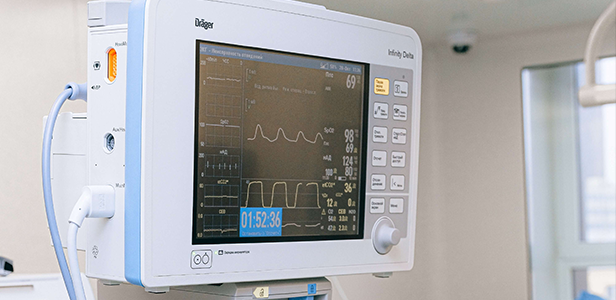4 Reasons Why Part II: The Evolution of Office Healthcare Technology
Today’s post is part II of our ongoing series about moving procedures out of the hospital and into ambulatory surgery center and office-based environments. We’re discussing the contributing factors to the site of service shift, and its benefits to patients and doctors alike. Last week, we covered advances in surgical procedures and anesthesia. This time, we’re addressing the rise of office healthcare technology.
Advances in technology have greatly contributed to the rise in office-based procedures. This includes passively beneficial progress made through greater interoperability between EMR systems, but also more actively, with the development of office healthcare technology, like equipment specifically designed to move less-complex procedures out of hospitals and into surgery centers and office-based settings. This was driven by payers and policy advances, but also by device companies actively engaging with an opportunity to evolve their products to make them both useable and attainable for independent physician offices.
That second factor is quietly incredibly fascinating. Today’s lighter weight, portable devices are intuitive to use and less expensive than their predecessors. It was this line of thinking that also led to the development of monitoring and emergency equipment which allowed for certain procedures to be safely performed in an office. Moving procedures, such as endometrial ablation or lithotripsy, out of resource- and cost-intensive hospital environments, and into an office setting also meant device companies could align with the industry’s mission to cut costs. Physicians and insurance providers saw the potential financial benefits for both themselves and the patients by performing these procedures in an office and ASC settings rather than a hospital, which made this technology an easy sell. It wasn’t long before state medical oversight began supporting the same changes, offering codified guidance to providers and vendors alike. Another smart move by these companies was to build the cost and price structure around the reimbursement incentives offered by the carrier so they knew the physician could afford and make money off bringing the procedure, and the device company’s equipment, into their office.
A less obvious technology advancement that has played a significant role in enabling the site of service transition to office-based surgical settings is traditional computer technology (i.e. hardware and software). Hardware such as desktops, notebook PCs, and tablets are continuously advancing. At the same time, material costs are decreasing for end-users, meaning constant available interfaces to healthcare office technology like EMRs and scheduling an affordable reality for physician offices. To that end, software has also evolved, enabling scheduling to be efficiently coordinated in office and inventory easily managed online. There are also affordable EHR/EMR options for smaller practices like a physician’s office or independent ASCs.
Another key development in healthcare office technology is the advent of cloud computing. Cloud-based technology eliminates hefty upfront IT investment. The only things physicians need to get up and running are an Internet connection and a computer, laptop, or tablet. Because the vendor is responsible for managing all the upgrades, backups, and maintenance, there is no need for an onsite IT department. And, no additional physical space is required to house a data center because IT operations are at the vendor’s secure data center. With easier, more affordable access to technology, physicians can provide better, more efficient, and safer care to patients.
Finally, while artificial intelligence (a topic we’ve more thoroughly addressed here) has been a part of diagnostic and risk adjustment solutions for decades, the explosion of interactive language modules will make information even more available to patients at increasingly smaller scale practices, allowing physician owners to spend more time directly treating their patients while offering top tier customer service.
The means to treat more patients safely and effectively at lower cost is a particularly exciting turning point in healthcare across the United States. If you are in an office-based, ASC, or pediatric dental environment, or considering moving out of the hospital setting, our partners in Texas, Chicago, and the Pacific Northwest are ready to help you with full turnkey anesthesia services that always include free, consultative help in launching or expanding your practice.
Recent Posts 
The Critical Partnership Between the Clinical and Business Teams
Healthcare GDP is 9% of US GDP, 4th overall, weighing in at $2.3T. It’s also the largest source of government spending, at 28% of the federal budget (nearly doubling the DoD budget for the largest military in the world). Balancing clinical and quality of care requirements while also dealing with shrinking reimbursements and major consolidation...
Ambulatory Management Solutions Rebrands to Ambulatory Anesthesia Care (AAC)
One of the lynchpins of safe, effective surgery is exceptional anesthesia. Obsessive dedication to quality and dogged pursuit of innovation by groups like Mobile Anesthesiologists in Chicago, Noble Anesthesia Partners in Texas, and M2 Anesthesia, a pediatric dental anesthesia group in the PNW, are all part of a larger ecosystem of success. That success has...
Anesthesiologists Are Essential to Patient Safety
With the growth of ambulatory surgery, there are increased efforts to meet demand. One approach has been changing requirements on physician-anesthesiologists in the OR, including two bills up for consideration in Illinois, both removing the requirements for direct anesthesiologist supervision of CRNAs or other providers when delivering anesthesia (1 and 2). While CRNAs are an...

